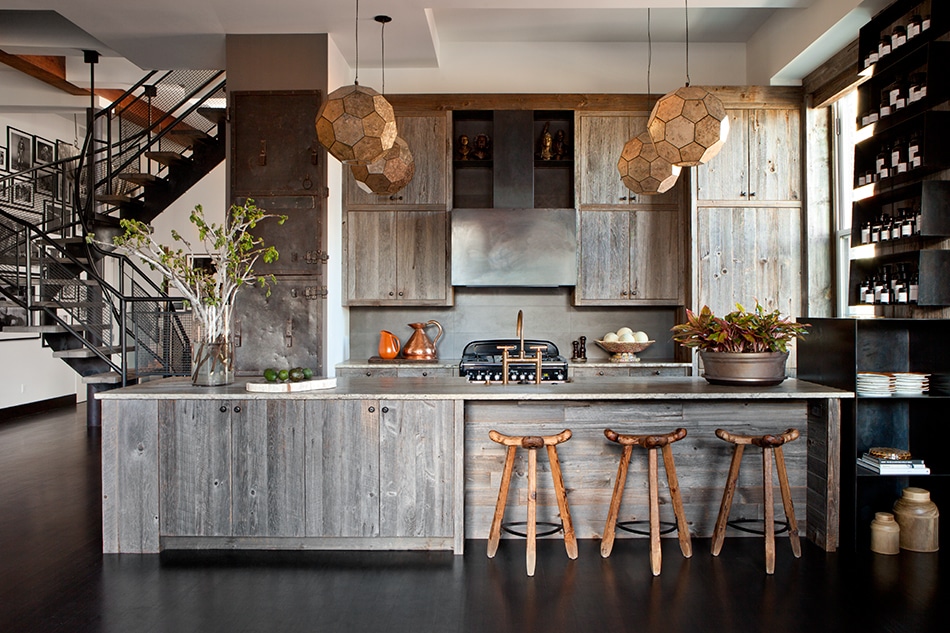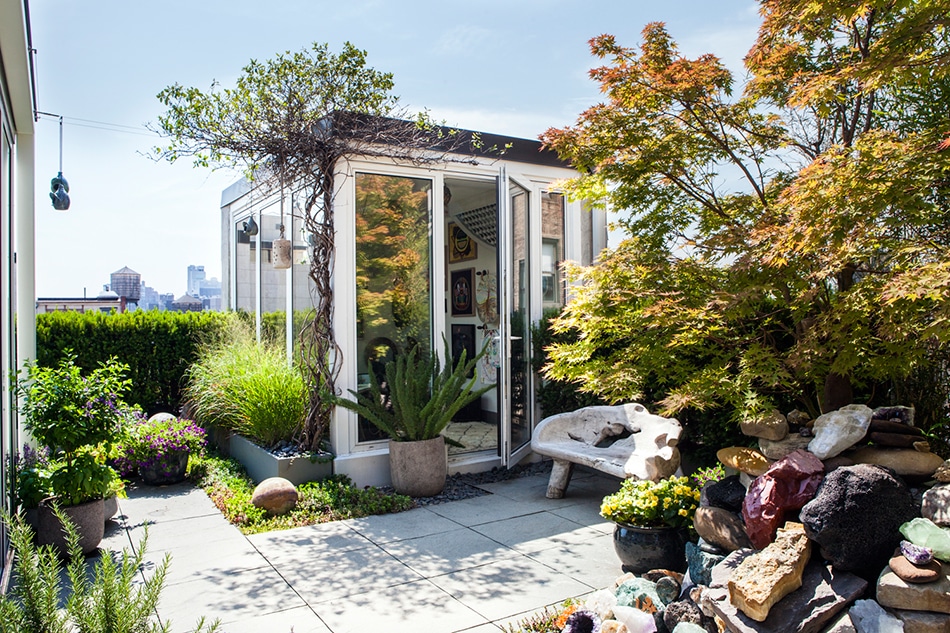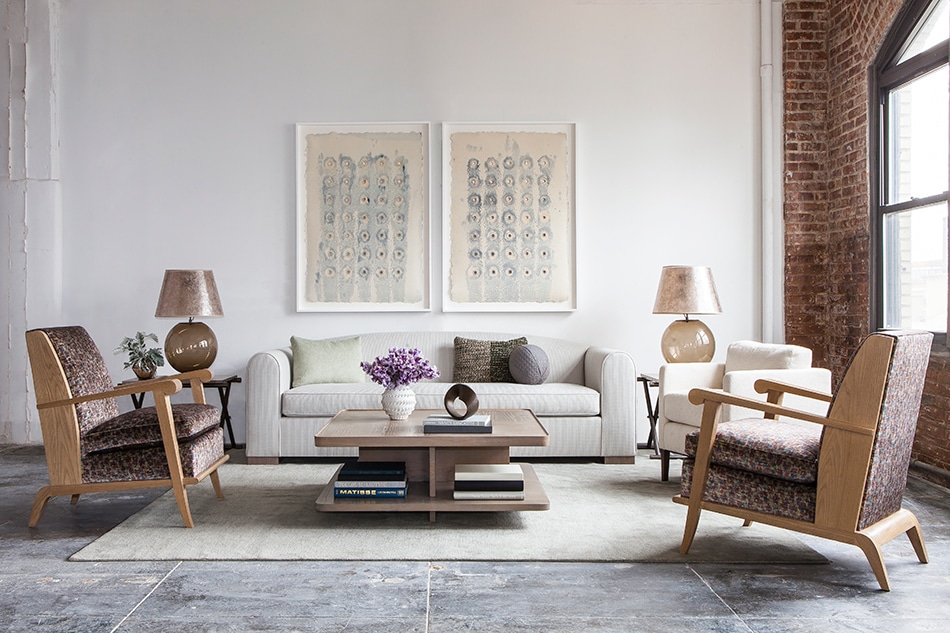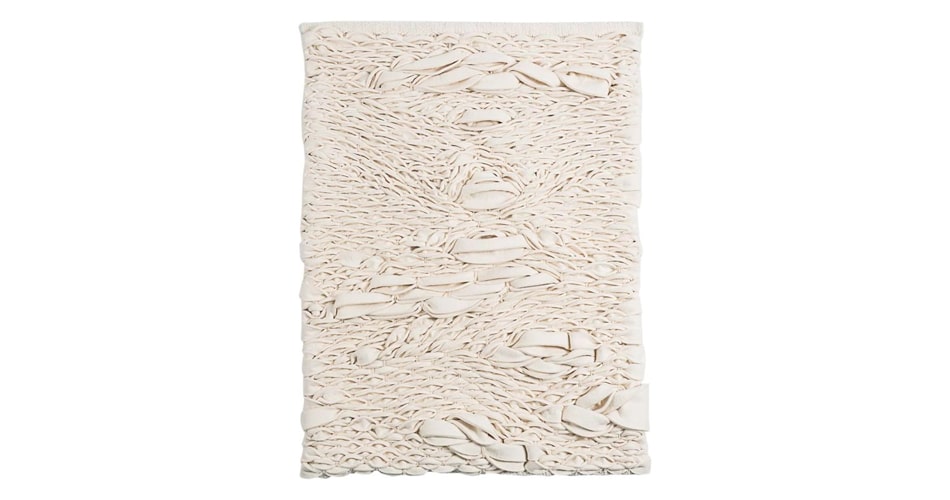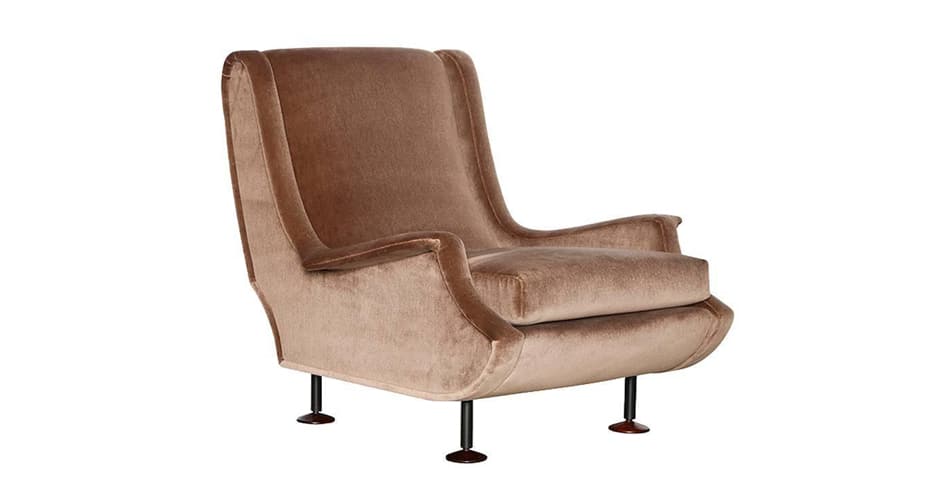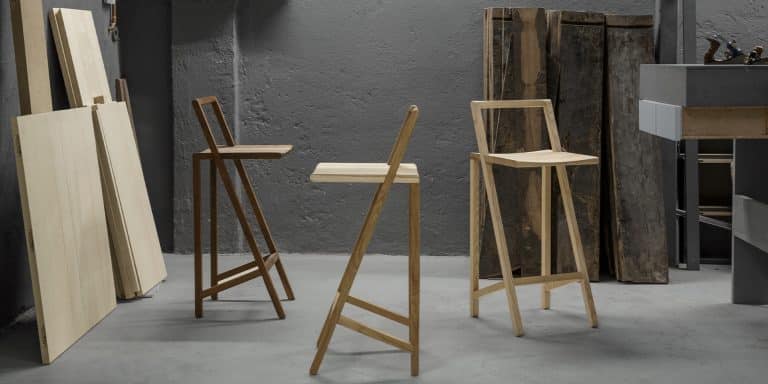
July 10, 2017After more than 30 years in the interior design business, James Huniford continues to challenge himself with new projects and a growing furniture line (portrait by Ryan Moore). Top: For the living room of this penthouse on New York’s Bond Street, Huniford created a custom sofa and paired it with Gianfranco Frattini lounge chairs and a live-edge coffee table with built-in turntable by BDDW (photo by Nick Johnson).
Looking back on his three-plus decades as an interior designer, James Huniford succinctly describes the secret of his success: “I had no preconceived ideas, because I was self-taught.” His curiosity and constant search for ways to integrate the old and the new — whether in interiors, furniture or found objects — has produced an impressive body of work that includes comfortable retreats from Long Island, New York, to Marin County, California, as well as sleek Manhattan apartments, to name just a few of his many projects.
Huniford, who is better known as Ford, was born in Syracuse, New York, and grew up in an agricultural area. His parents had a cabin on the St. Lawrence River, and he became fascinated by the idea of design when visiting some of the grand summer houses of the Thousand Islands — studying the stenciled burlap walls of one mansion’s entrance hall and the detailing of the fabric cushion covers on the wood-and-brass boats that ferried people between islands.
In search of adventure and opportunity, Huniford left home at 17, heading first to New York, then to Los Angeles and making several trips to Europe in his early 20s that he financed by waiting on tables back in Manhattan. He was especially taken with the modern architecture and industrial materials of the Maison de Verre in Paris, the Greek-influenced Villa Kérylos in the south of France, Karl Friedrich Schinkel’s architecture in Germany and the Baroque buildings of Rome.

The living room of Huniford’s Bridgehampton, New York, home features a linen sofa of his design and an English 18th-century settee, along with reclaimed pine floors. Hanging above the sofa is a repurposed tractor belt cover, and on the right is a mixed-media work by Ingrid Pitzer. Photo by Richard Powers
Huniford’s sensibility was further refined by his partnership of more than 20 years with the designer Stephen Sills, which began in the 1980s and quickly grew to include glamorous homes for star clients like Tina Turner and Vera Wang. Huniford, who started out with little experience, became increasingly involved with the design of the duo’s ultra-chic interiors.
With the beginning of the new century, Huniford moved on to a new phase in his life and his career. The first of his two children was born in 2006, and he officially established his own design practice in 2008. He bought an 1865 farmhouse in Bridgehampton, New York, which, he says, became “a laboratory for me to do things with my vision and references and which set the tone of my career.” Here, Huniford mixed English furniture and art by Donald Judd and Robert Rauschenberg with a 12-foot-long rusted metal sign from a WPA-era truck. He hung a huge wooden chain from Washington State’s San Juan Islands from the ceiling “like sculpture. I created tension in space,” he explains. He also painted the rooms a color he once described as “foggy summer squall,” a white that reveals subtle green and blue tones as the light changes.
Huniford used a similar color strategy in the house he designed (with the Southampton architect James McChesney) for the theater director Walter Bobbie and his husband, the Metropolitan Opera tenor David Frye, a childhood friend of Huniford’s. Inside the home (the architecture of which was inspired by the potato barns once prevalent in the area), Huniford painted the walls, ceiling and trim of every room the same pale “subtle celadon blue,” to establish what he calls “a modern sensibility of calm.” All the floors are of wide-plank reclaimed wood. “They don’t look perfect,” he explains. Huniford says that his work explores “how things reveal themselves slowly — which is how I see life and the creative process.”

Huniford Design Studio and architect James McChesney collaborated on the double-height living room of this Water Mill, New York, home. Huniford designed the sculpture above the fireplace, as well as the sofa, chairs and ottoman. The pendant is a galvanized-metal farming object repurposed as a light fixture. The bulbous steel sculpture on the table in the foreground is from Andrew Spindler Antiques. Photo by Robyn Lea
Huniford’s interiors skillfully mix old furniture with new (often of his own design), refined and rough materials and art of many styles and eras. In a glamorous Greenwich Village apartment for Catherine Montgomery, a tech entrepreneur, he installed a projection by the contemporary artist Jennifer Steinkamp next to a Vienna Secession chair. For the living room of a vacation house on Martha’s Vineyard, he had leaves and ferns found on the 50-acre property pressed into wallpaper and turned a group of 50 found wooden spools into a sculpture in the dining room.
His current projects include a downtown Manhattan triplex penthouse for a bachelor in his 30s done in a palette of deep greens, rustic grays and smoky blues — “colors I haven’t worked with in a long time,” Huniford says — and outfitted with a freestanding fireplace and custom silk-and-linen carpets from Beauvais. Another apartment nearby, also for a bachelor client, includes a custom-made copper-colored resin bar and a sofa that swings from the living room ceiling. “We’re having fun,” Huniford says of the variety of interiors he and his office are designing. He has also just added 30 new pieces to his Huniford Collection of what he refers to as “tailored, customizable” furniture, which is made by hand in New York.
As if his business ventures weren’t enough, Huniford is also the founding chair of Design on a Dime, the yearly designer-vignette sale that benefits Housing Works, which provides housing and medical and job services to people living with AIDS and HIV. He recently presided over this year’s event and its fifth annual Groundbreaker Awards, honoring the journalist Tamron Hall and John Demsey, the executive group president of the Estée Lauder Companies.
When asked if he has a wish list for the future, Huniford replies, “The future is right now. I feel fortunate and grateful to be working for the clients I have.” But should he find himself with a little free time, Huniford would love to learn welding and take pottery classes, simply for the pleasure of making something. As he puts it, “I like the idea of being in the moment.”

